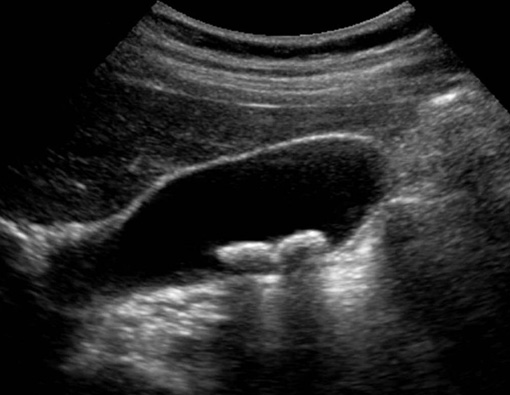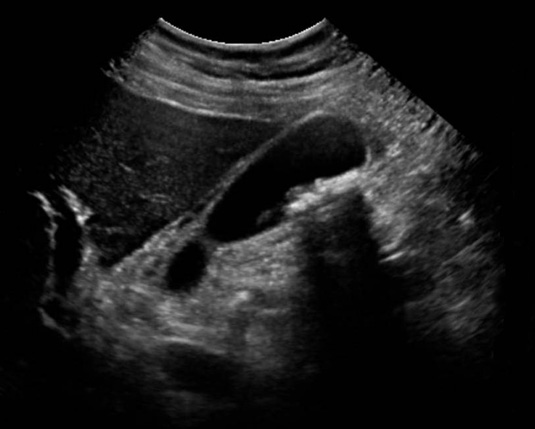Abdominal Ultrasound
Ultrasound (also known as sonography or ultrasonography) is a diagnostic procedure that transmits high-frequency sound waves, inaudible to the human ear, through body tissues. The echoes are recorded and transformed into video or photographic images of the internal structures of the body. Abdominal ultrasound is a non-invasive method that aims to show the structure of the organs in the abdominal cavity ultrasound images this intensity (echo) reflected wave from the border area of the two or two tissues that are in contact. The screen image is formed on the basis of phenomena of absorption of ultrasonic waves in the tissues in the form of a mosaic of light and dark fields in gray scale and registering the reflected ultrasound waves from the boundaries of the two tissues that have different structures.
Ultrasound images help in the diagnosis of a wide range of diseases and conditions. Classic ultrasound examination of the abdomen provides a detailed insight into the size and structure of parenchymal organs: liver, spleen, pancreas, biliary system (gall bladder and bile ducts), kidney, adrenal gland. This method can also be clearly visualize the abdominal portion of the aorta, as well as bladder and prostate in men as well as reproductive female organs. On the other hand, abdominal ultrasound has limited possibilities in the diagnosis of diseases of hollow organs of the digestive system (stomach, duodenal, stomach, small and large intestine) prevshodno the presence of air content in them. To view these bodies are best endoscopic methods (gastroduodenoskopija – endoscopic examination of the stomach and intestines dvanaestoplačanog or colonoscopy – endoscopic examination of the colon).
Ultrasound may be used with other diagnostic procedures or by itself. Studies have shown that ultrasound is not hazardous. There are no harmful side effects. In addition, ultrasound does not use radiation, as x-r ay tests do.
In the following pages you can find more detail about the importance of ultrasound diagnostics in a detailed diagnosis of patients with benign diseases of the upper digestive tract.
Ultrasound examination of the abdomen is performed using a probe that touches on the patient’s body (above the organ that needs to be reviewed) and the pulse is excited with several periods of ultrasonic waves. The impulse is reflected from the surface of the skin and other tissues and reflected waves are returned mechanically excite the probe having at its ends generates electrical voltage which is processed and amplified. On the monitor, we get the picture of a section or layer in the body, and by moving the transducer on the patient’s body get more section-layer. In this way, we get the picture of the inside section of the inspected organ. Depending on the position of the body that we consider there are different types of probes, or for deeper localized in relation to invested probe on the patient’s skin using probes with less frequency, while those with greater frequency used for superficial localized structure.
Compared to other diagnostic procedures diseases such as abdominal computed tomography (CT / scanner) or magnetic resonance imaging (MRI) and ultrasound is faster, cheaper and simpler, given that is not used as a source of energy ionizing radiation completely harmless diagnostic procedure. Ultrasound examination of the abdomen is a necessary initial examination in the diagnosis of diseases of the abdominal organs with a high degree of sensitivity but lower specificity compared to CT and MRI, which are the ultimate choice for accurate characterization and localization inraabdominalnih pathological changes.
Thanks to the simplicity and safety of examination, ultrasound represents a reliable and effective method in the diagnosis as well as regular monitoring of various diseases of the abdominal organs. Ultrasound examination of the abdomen is possible to measure the size of the abdominal organs, assess what their composition and structure, and whether they have the potential pathological content. The indication field and ultrasound with a high degree of sensitivity and specificity can be diagnosed following pathologic processes in the stomach:
| Disease | Organ |
|---|---|
| Tumors | liver, gallbladder, pancreas, spleen, kidneys, bladder, ovary |
| Cysts | liver, pancreas, spleen, kidney, ovary |
| The presence of stone | gallbladder, bile ducts, kidneys, renal excretory system and bladder |
| The flow of blood through the blood vessels and detect thrombosis, ateromatičnih plaques, as well as the expansion of the blood vessel (aneurysm) | peripheral blood vessels and the aorta |
| Free fluid | pleural spaces (“the lungs”) – in the lower parts of the lungs, because the patient when sitting water as a heavier than air occupies the lower part of the space between the two pleura. the abdomen and the pelvis – and whether the liquid is free, limited or infected. therapeutic approach – After detection of free liquid can be carried out invasive treatment of drainage and evacuation of fluids. |
| Lymph ice | due to the inflammatory process, or the reaction in some other pathological process. the shape and size of the lymph node indicate whether he or inflammatory tumor amended |
| Bleeding from a blood vessel and / or the formation of blood collection (hematoma) |
usually after injury |
Conditions in which a mandatory advises ultrasound examination of the abdomen are abdominal pain and / or back; nausea and vomiting; bloating; unexplained weight loss; sudden enlargement of the abdomen; injuries in the abdomen and fever of unknown origin. Very often stones in the gallbladder or gallbladder inflammation can give symptoms of diseases of the upper tract digetsivnog so in large cases breoju necessary before a thorough diagnostic evaluation of esophageal and stomach načiiti abdominal ultrasound.
Ultrasound examination of the abdomen is performed so that the patient lies on her back while the doctor probe ultrasound device on which it had previously applied the gel goes through the skin of the abdomen. To get a better picture of some organs of the patient may be asked to turn on the right or left side. It is vital that the patient during the examination cooperate with the doctor, or to take the required position or hold your breath when requested to do so. The test lasts about 15 minutes and during the examination of the patient does not feel any pain.
Viewing can be repeated several times during the year without harmful effects on the body. Committee of the World Health Organization (WHO) is based on many years of testing and research allowed the use of ultrasound in medicine as a very safe method which can be used in regular diagnostic and therapeutic indications. Harmful effects of ultrasound, which is used in medicine is not scientifically proven.
Due to the fact that it is a very simple and safe diagnostic procedure, contemporary understanding of appropriate disease prevention abdomen represents a preventive annual implementation ultrasound diagnostics, in order to discover changes in time and prevent the development of disease.
Before the test
The preparation for this test will depend on the type of ultrasound procedure your doctor has ordered. Some preparations include drinking a quart of water before the test to obtain better images. Other preparations may include eating a fat-free dinner the night before the test, or possibly fasting. The doctor, nurse, or receptionist will give you complete instructions prior to the exam.
What is an abdominal ultrasound?
A right upper quadrant ultrasound examines the liver, pancreas, and gallbladder. The complete abdominal ultrasound includes the organs listed previously, but also looks at the kidneys, spleen, inferior vena cava, aorta, and bladder.
On the day of the test
You will be asked to not eat or drink anything 8 hours before the exam. However, you may still take your medicine with sips of water.
Your ultrasound test will be performed by a registered, specially trained, technologist and interpreted by a board-certified radiologist.
During the test
You will lie on a padded examining table. A warm, water-soluble gel is applied to the skin over the area to be examined. The gel does not harm your skin or stain your clothes. A probe is gently applied against the skin. You may be asked to hold your breath several times or roll on your side.
The ultrasound will take about 15 to 30 minutes to complete.
Diagnostics
- Medical History
- Abdominal Ultrasound
- Upper GI Series
- Upper GI Endoscopy
- Esophageal Manometry
- Esophageal 24-Hour pH Metry
- Esophageal 24-Hour pH Impedance
Lexicon
Patients Informations
Soon
If you have more questions contact us:
info@refluxcentar.com

 српски
српски


